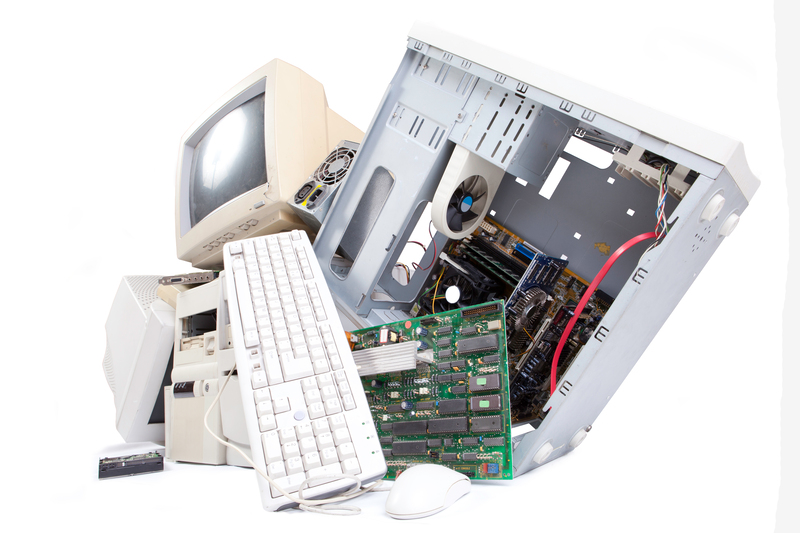Innovative Approaches in Tackling Microplastic Pollution
Microplastic pollution, an invisible yet persistent threat, is contaminating every corner of our world--oceans, rivers, soils, foods, and even the air we breathe. As awareness of its dangers grows, scientists, engineers, and policymakers are actively pursuing innovative approaches to curb the spread and impact of these minuscule pollutants. This comprehensive article explores cutting-edge solutions, advances in technology, and collaborative strategies aimed at combating microplastic contamination for a cleaner, healthier future.
Understanding Microplastic Pollution: Scope and Challenges
Microplastics are tiny plastic particles less than 5 millimeters in diameter. They originate from a variety of sources, including the breakdown of larger plastic waste, synthetic clothing fibers, personal care products, and even tire abrasion. These particles enter waterways, soil, and eventually the food chain, posing risks to wildlife and human health. Tackling microplastic contamination requires multifaceted, global efforts.
Types and Sources of Microplastics
- Primary Microplastics: Intentionally produced small plastics, such as microbeads in cosmetics and industrial abrasives.
- Secondary Microplastics: Result from the breakdown of larger plastic items due to environmental exposure or mechanical wear.
- Sources: Laundry wastewater, tire wear particles, agricultural plastic films, urban runoff, and mismanaged plastic waste.
Understanding the origins and distribution of microplastics is the first step in developing comprehensive strategies to combat their spread. Innovative solutions must address these sources at every stage--from production to end-of-life management.

New Technologies for Detecting and Tracking Microplastics
Effective management of microplastic pollution requires accurate detection, identification, and quantification. Advances in analytical technologies are revolutionizing how scientists track these pollutants, providing critical insights for mitigation efforts.
Advanced Spectroscopy and Imaging Techniques
- Fourier-transform infrared spectroscopy (FTIR): Enables precise identification and quantification of microplastics in environmental samples by analyzing their chemical fingerprints.
- Raman spectroscopy: Offers high-resolution analysis, even for particles within complex matrices like sediments and tissues.
- Automated imaging systems: Employ artificial intelligence to differentiate microplastics from natural particles, dramatically increasing efficiency and accuracy.
These advancements are streamlining monitoring programs worldwide, ensuring decision-makers have reliable data to inform interventions and regulations.
Citizen Science and Mobile Apps
Citizen science platforms and mobile apps empower individuals and communities to report and map microplastic occurrences. These user-driven databases complement scientific research, drive awareness, and build momentum for local cleanup initiatives.
Innovative Approaches to Reducing Microplastic Generation
Perhaps the most powerful way to address the microplastic crisis is to prevent new particles from entering the environment in the first place. This requires solutions both at the source and throughout the supply chain.
Eco-friendly Material Innovations
- Biodegradable polymers: Development of bioplastic alternatives capable of decomposing safely in natural environments, reducing the persistence of plastics.
- Natural fiber textiles: Innovations in clothing design focus on minimizing synthetic microfibers by shifting towards cotton, hemp, bamboo, and other renewable fibers.
- Microbead bans: Many countries have enacted regulations prohibiting the use of microbeads in personal care products, driving manufacturers to adopt natural exfoliants.
Product and Process Redesign
- Low-shedding textiles: Textile engineers are refining manufacturing methods to create fabrics that release fewer synthetic fibers, even after repeated washes.
- Wear-resistant tires: New tread formulations and design techniques extend tire life and decrease the release of microplastic dust onto roads and waterways.
- Closed-loop product systems: Companies are adopting circular economy models, prioritizing recyclability and reuse to minimize plastic waste entering the environment.
Engaging industry leaders and consumers in the shift towards sustainable materials is crucial for reducing the overall load of microplastics in the environment.
Advanced Filtration and Removal Technologies
While prevention is paramount, innovative filtration and removal techniques are essential for addressing existing microplastic pollution, especially in waters and wastewater.
Wastewater Treatment Plant Innovations
- Membrane bioreactors (MBRs): Employ ultrafine filtration membranes to capture microplastics far smaller than the pore size of standard treatments.
- Electrocoagulation: Utilizes electrical currents to aggregate microplastic particles, enabling efficient removal from wastewater streams.
- Sand, gravel, and biofilter integration: Enhanced mechanical and biological filtration setups provide multi-stage barriers for particulate plastics.
Household and Community Solutions
- Washing machine filters: Simple in-drum or in-line filters capture synthetic fibers during laundry cycles before they reach wastewater systems.
- Portable microplastic collectors: Devices designed for use in homes or small-scale setups can remove particles from harvested rainwater, sinks, or aquaria.
Ocean Clean-up Initiatives
- Floating barrier systems: Large-scale arrays deployed in rivers and marine environments to capture and remove floating plastic debris, including microplastics.
- Innovative skimmers and drones: Automated aquatic drones equipped with fine mesh systems are being used to pick up small plastics from the water surface.
- Bio-inspired filtering: Mimicking filter-feeding organisms, some water treatment systems use biological material to capture a broad range of particle sizes.
By combining these breakthrough approaches, the ability to remove and intercept microplastics from waterways is steadily improving worldwide.
Bioremediation: Harnessing Nature's Power to Break Down Microplastics
Bioremediation offers a promising pathway for eliminating microplastics using organisms and biological processes to degrade them into harmless substances.
Plastic-degrading Microorganisms
- Bacteria and Fungi: Specific microbial species have demonstrated the ability to break down common plastics--such as polyethylene terephthalate (PET) and polystyrene--into non-toxic byproducts.
- Engineered Enzymes: Scientists are developing synthetic or enhanced enzymes, such as PETase and MHETase, capable of efficiently degrading plastic polymers at lower energy costs.
- Algae-based systems: Some microalgae can encapsulate and transform microplastics, reducing their environmental persistence.
Challenges remain in scaling these biological solutions, but ongoing research and bioengineering efforts offer hope for large-scale applications in soils, water bodies, and even landfills.
Policy, Collaboration, and Education as Enablers of Change
Technological innovation alone is insufficient Without supportive policies and broad-based awareness, meaningful progress against microplastic pollution is limited. Collaborative approaches integrating science, industry, government, and public engagement are proving essential.
Global and National Policy Innovations
- Microbead Bans: Many countries have enacted specific bans or regulations targeting microbeads in cosmetics and cleaning products.
- Extended Producer Responsibility (EPR): Policies assign greater waste management responsibility to manufacturers, incentivizing eco-friendly design and take-back programs.
- New standards for water and food safety: Emerging guidelines define permissible microplastic limits in drinking water, seafood, and agricultural products.
International Collaboration and Research
- United Nations Environment Programme (UNEP): Coordinating international agreements and research to address plastic pollution on a global scale.
- Cross-industry alliances: Partnerships between plastics manufacturers, clothing brands, and environmental NGOs are driving innovation in materials and supply chains.
- Open-data initiatives: Facilitating worldwide sharing of microplastics data and best practices accelerates the spread of successful intervention models.
Education and Public Engagement
- Community cleanups and awareness campaigns: Local groups and NGOs regularly organize river, beach, and urban cleanups while educating citizens on microplastic sources and solutions.
- Educational curricula: Integrating microplastic science and sustainability principles in schools inspires future leaders to champion cleaner technologies.
- Consumer choice campaigns: Encouraging the purchase of products with reduced plastic content or improved recyclability has a direct impact on manufacturing trends.

Future Horizons: The Path to a Microplastic-Free World
Exciting breakthroughs continue to emerge in the battle against microplastic contamination. Startups are unveiling biodegradable alternatives, research teams are uncovering new plastic-digesting enzymes, and governments are refining regulations for safer, more circular societies. Success depends on integrating these innovations, both technological and societal, into a cohesive global effort.
Promising Research Directions
- Smart sensors: Real-time, networked sensors could revolutionize the global mapping and monitoring of microplastics, providing actionable data for rapid intervention.
- Machine learning and AI: Leveraging artificial intelligence to accelerate the identification, classification, and processing of microplastic contaminants at scale.
- Next-generation biodegradable polymers: Designing plastics that not only serve functional needs but also fully disappear without harm at the end of their useful life.
Conclusion: Joining Forces Against Microplastic Pollution
The challenge of tackling microplastic pollution is daunting but not insurmountable. By fostering innovation, supporting policy, and strengthening education and collaboration, the world is paving the way for a future with less plastic and more sustainability. Whether it's cutting-edge filtration devices, biodegradable materials, or community-driven cleanup programs, every effort matters in restoring the delicate balance of our ecosystems.
Let us all become part of this movement, supporting and advocating for the continued evolution of innovative approaches to microplastic pollution. By doing so, we contribute not just to cleaner water and healthier wildlife, but to a more resilient and sustainable planet for generations to come.